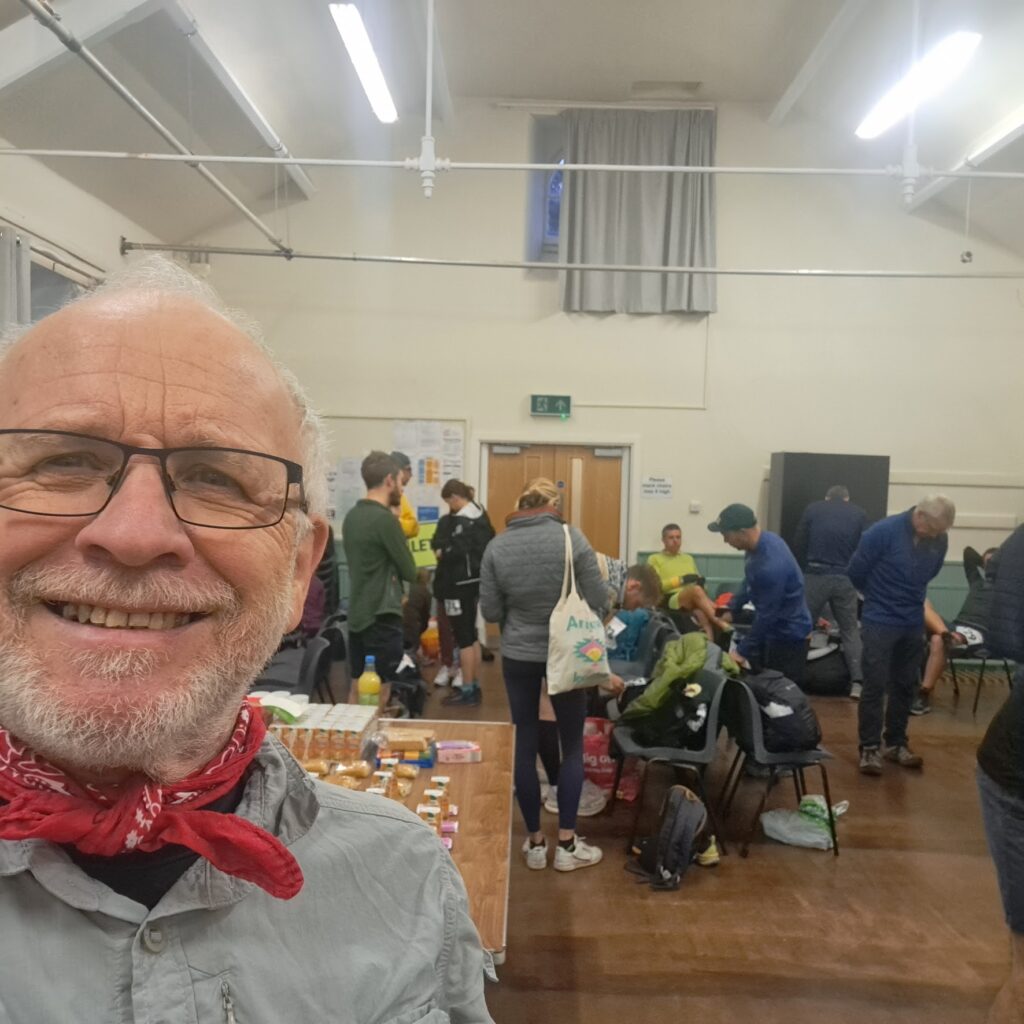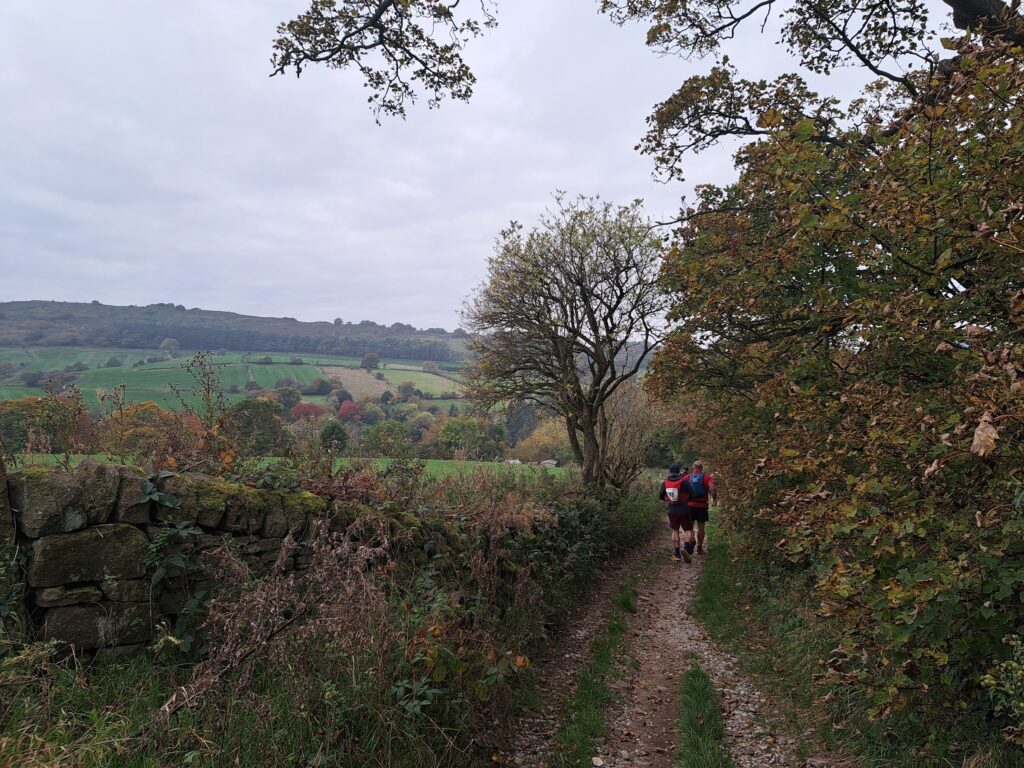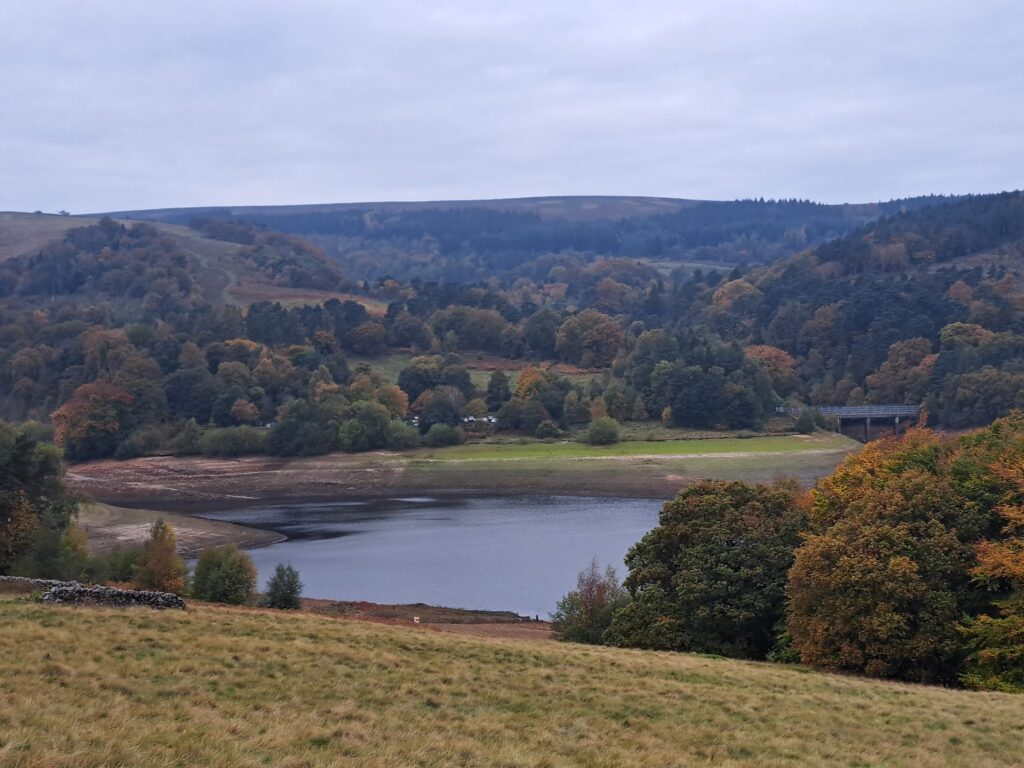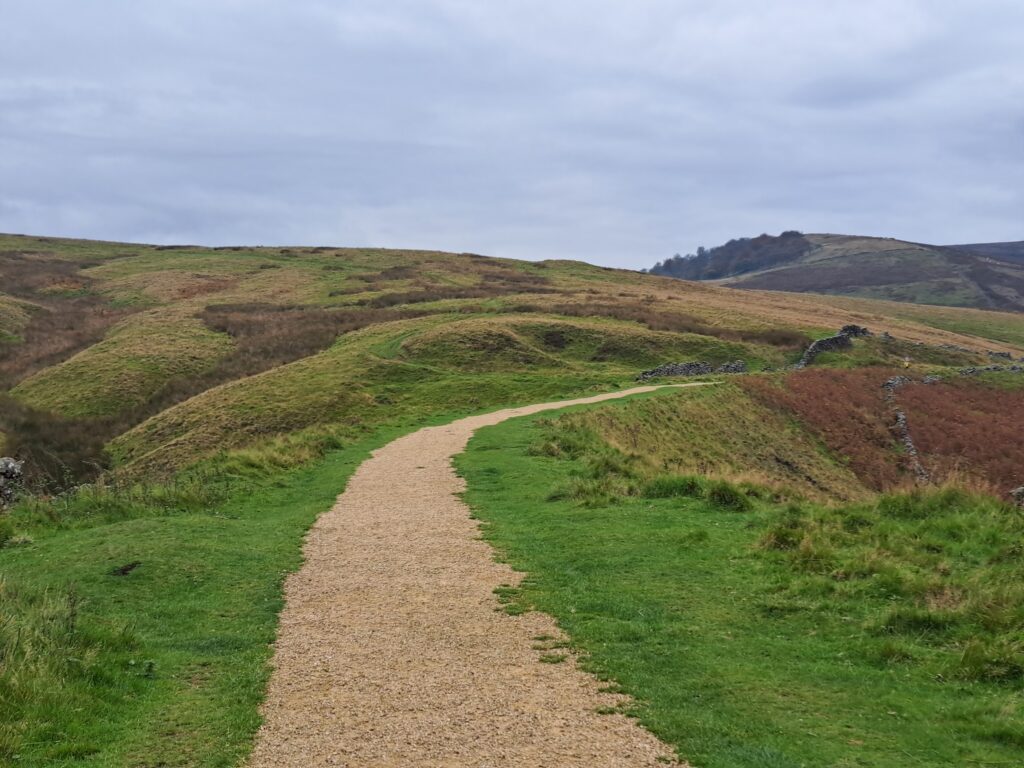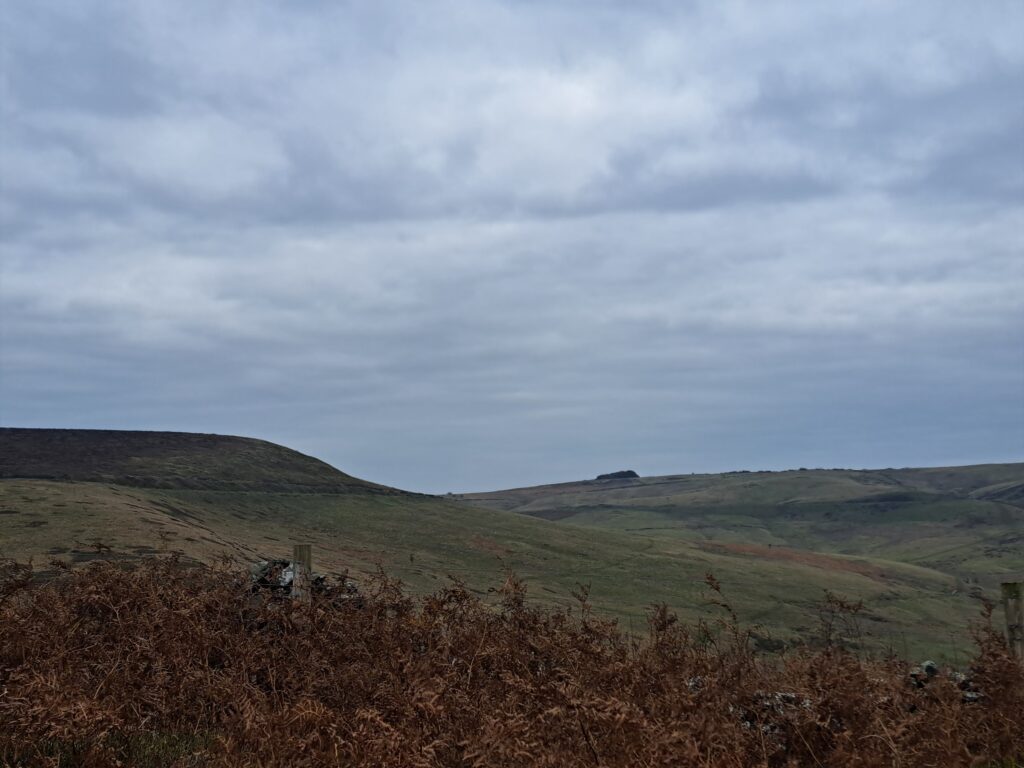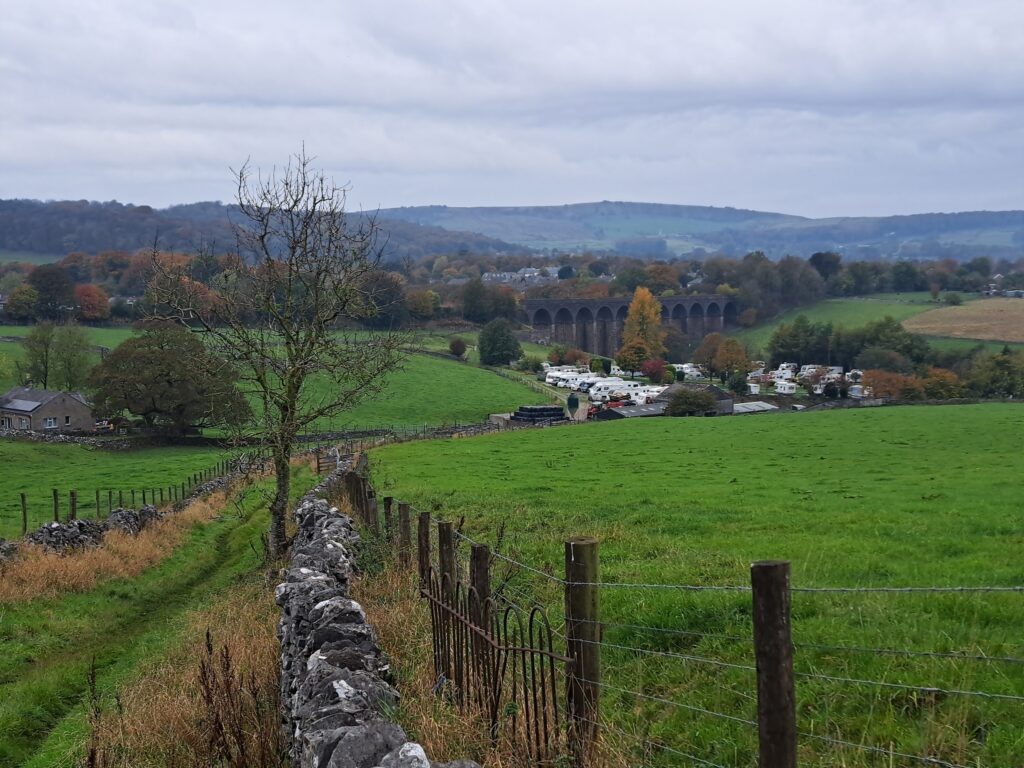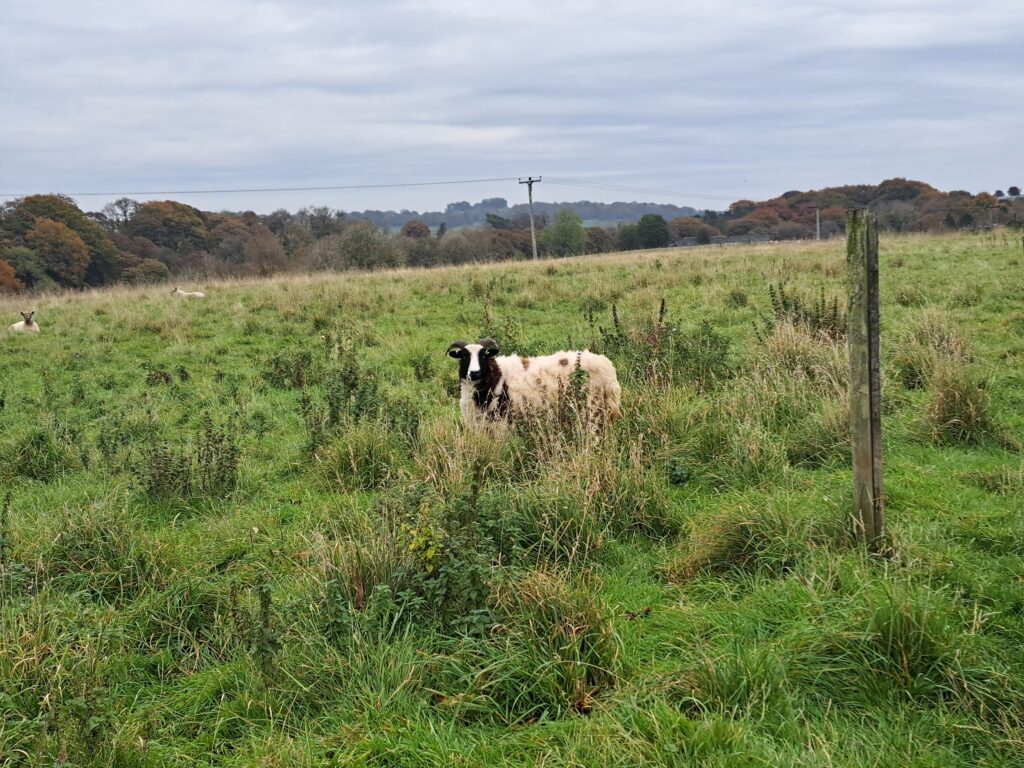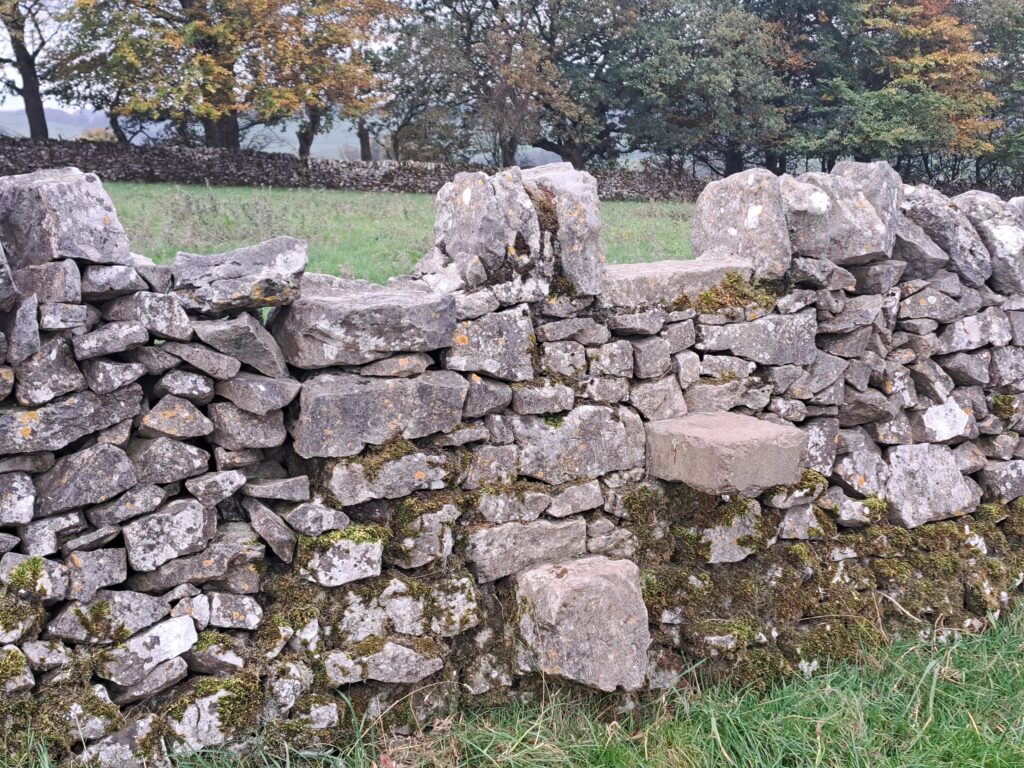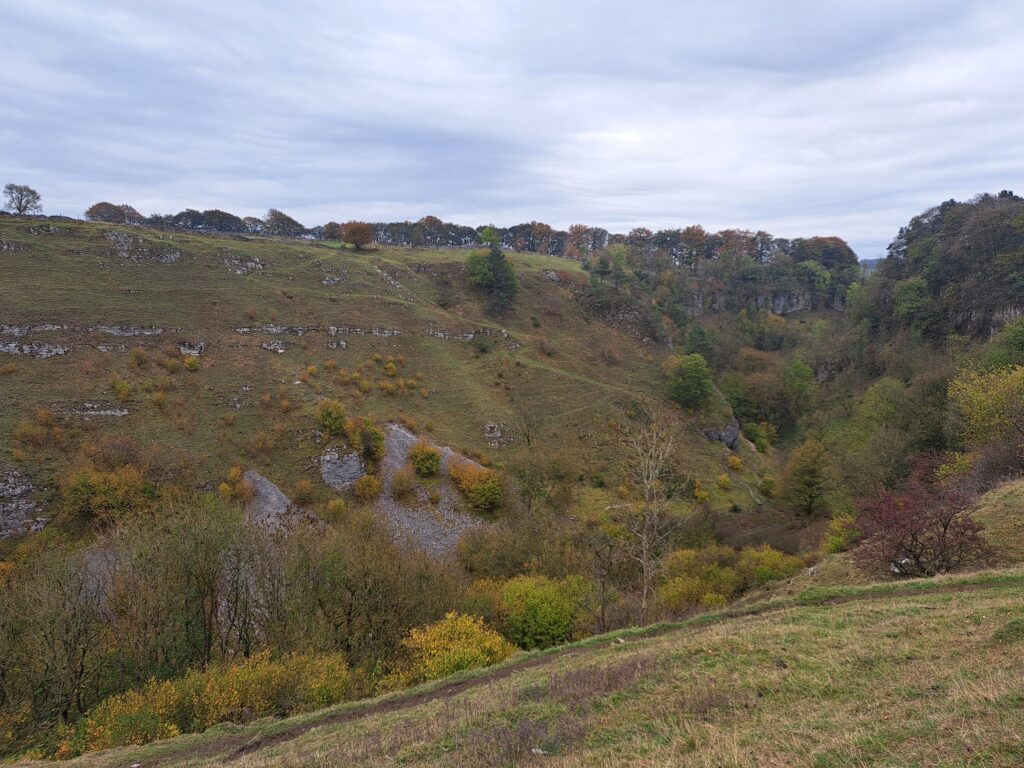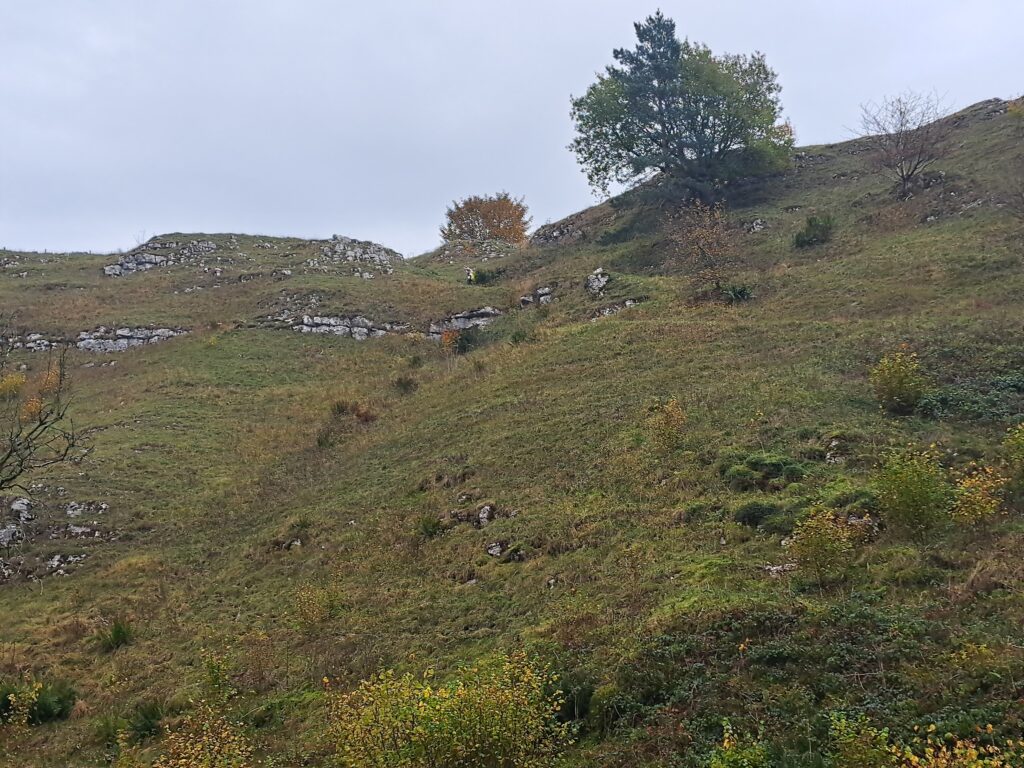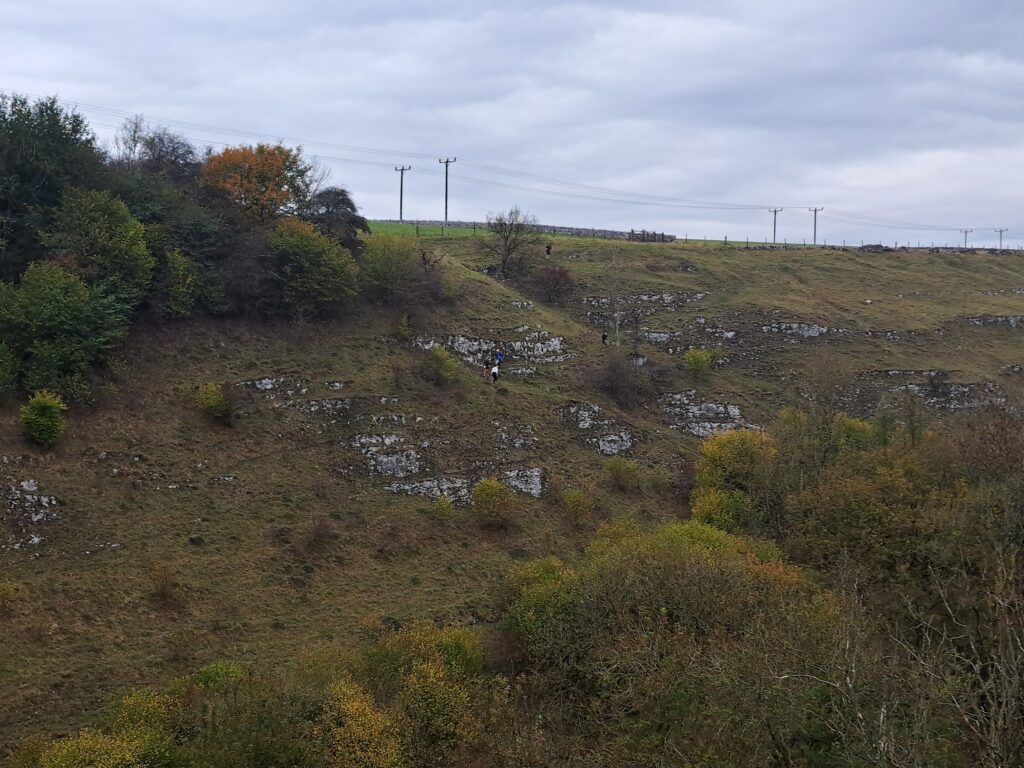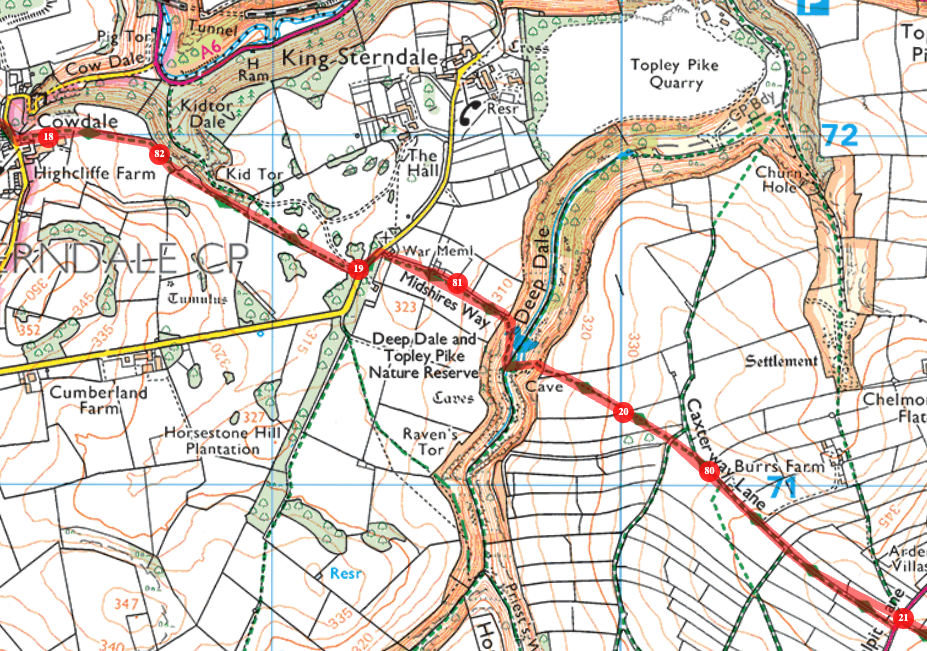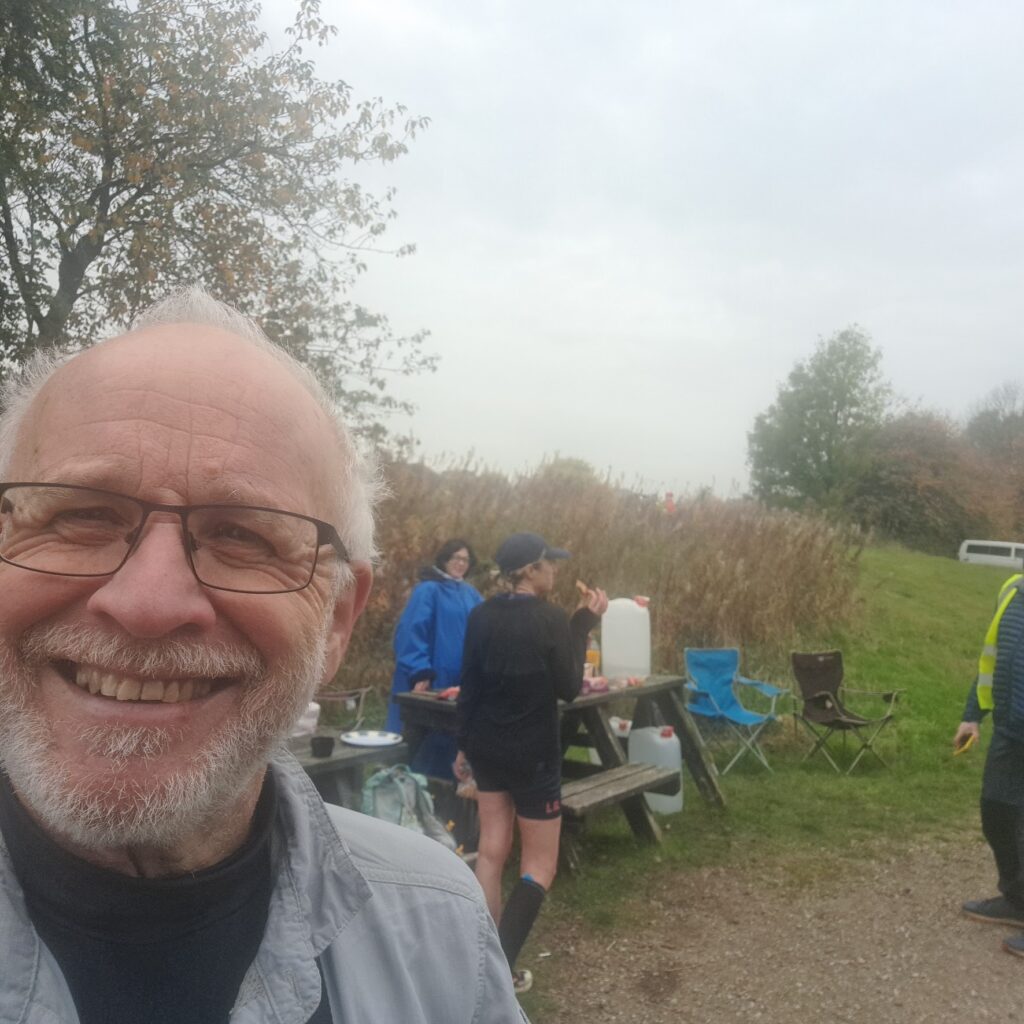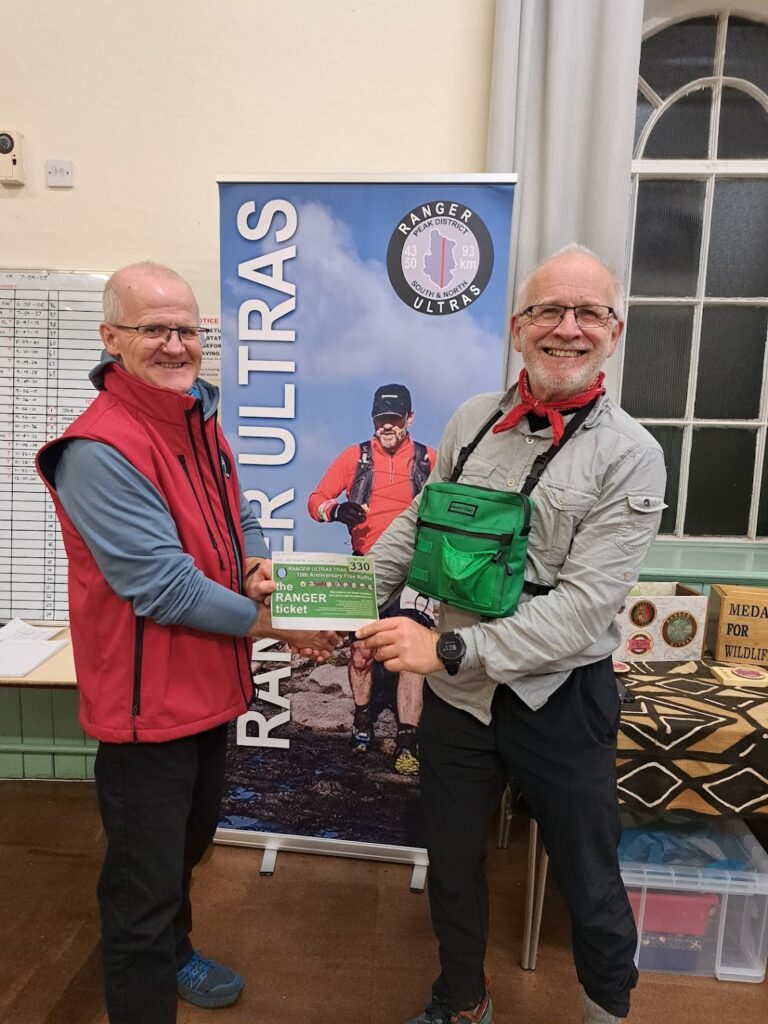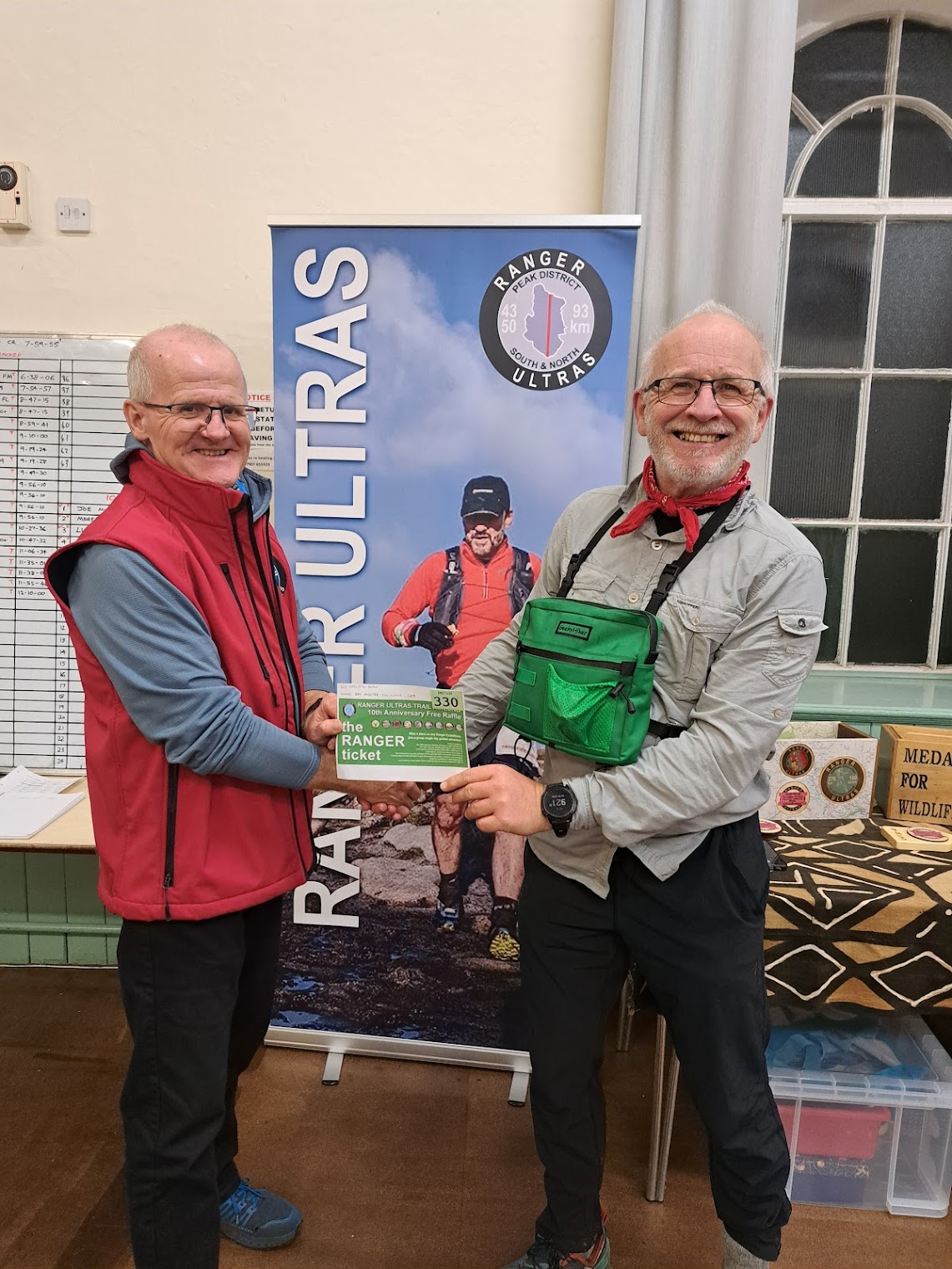Ray Poynter, Sunday 19 October
Yesterday, on Saturday, I took part in the Ultra Rangers High Peak race. In this race, there were options for 18km, 70 km, and 100km. I chose the 70K for two reasons. The first is that I’m not in great running shape (by my standards) at the moment so the 100K would be really difficult. But secondly, this year, I’ve begun to realise I don’t always need to pick the most challenging race every time, and on this occasion, the 70K was going to be hard enough.
The race was about an hour and 40 minutes drive away from my home, so I set the alarm for 5:00 in the morning (I went to bed quite early the night before). I got up, had a macaroni and cheese breakfast, and left home at 6:00 am. I arrived at the race at about 8:40 and completed the registration process. Registration included the kit check. We have to carry a variety of things in our rucksack because part of this is on the moors and fells. The sort of things that we have to have in our bag are water, food, a first aid kit, a waterproof jacket, a hat, gloves, a bivy bag (just in case things get really bad), a map for the route, a compass, a whistle and a few other bits and pieces. Before the race starts, they always check that we have all the bits and pieces on the required list. Once they’ve done that, they give you the race number and they fit a tracker. The tracker means that they can see where we are, and anybody following the race can see where we are. We often call it ‘dot watching’, watching people’s dot crawl across the country can be surprisingly gripping.
At 9:00 am, we started running. We started at Whaley Bridge in the northern part of the Peak District, and we’re going to be heading south. The way this works is that everybody goes out for half the distance and then turns around and comes back. So the 18K people go out for 9 km, we 70km people go out for 35km, and the brave 100km runners go out for 50km.
I wasn’t sure how long it was going to take me to run 70km, as this was my first race of this length with a rucksack and heavy kit since probably January. I thought it was going to be somewhere in the 10 hours to 14 hours range, so as we start, I have that in mind and I make sure that I start very steadily. One of the noticeable things about ultra racing is that, except for the fast people, you walk up all of the steep or significant hills. This helps conserve energy and helps break up the pace a bit. There was a long hill about 1km from the start, and most of us walked up it.
Before long, we were in the Goyt Valley and then up through some wonderful autumnal trees and colours up to the top of the valley over the top and then all the way down into Buxton. At this stage, you’re feeling pretty comfortable keeping the pace nice and steady, nibbling food from time to time. The water I drink has Tail Wind in it, which has food and isotonics in it.
Most of the time I’m on my own. Some people like to run in pairs, but there’s always a compromise. One of you is running a bit faster, one of you is running a bit slower than you would ideally run. This means a lot of the time, I find that I’m running on my own. After a few hours, I often can’t see anybody in front of or behind me. It helps to be comfortable inside your own head to be a runner in ultra races, or maybe these events make you more comfortable in you own head. I do quite a bit of talking to myself (silently, in my head) and I think others do too.
Climbing out of Buxton, we start to get lots of stiles. There are two types of styles in Derbyshire. There are the normal rickety wooden ones that help you get over fences and barbed wire. But we have lots of dry-stone walls in Derbyshire, and these have stone sticking out of the wall for you to clamber up. It’s not too bad near the beginning of the race, but as the day goes on, your legs get more tired climbing over them.
Generally, the ground was pretty good. There were a few places where it was wet, slippery and muddy. But mostly very good until we got to Deep Dale. Deep Dale is a very narrow, step-sided, limestone valley, carved out by rivers. Deep Dale is a bit of a scramble down, and it’s a bit of a scramble up, making it much slower than a regular hill. Since this is an out-and-back route, when you go down-and-up the valley on the way out, you know you will do it in reverse on the way back.
So what’s going through your mind when you’re running? Well, you’re not thinking about the finish, that would make it very hard. On the way out, the main thing you are thinking about is the 35 kilometres to the turnaround point. But you are also thinking about little milestones. So it’s quite nice when you go through 10 kilometres, it’s quite nice when you go through 21 kilometres because that’s half a marathon. You are also thinking about how far it is to the next checkpoint. On this race, there were two checkpoints on the way to the turnaround point. One checkpoint had snacks, and one just had water.
As I said earlier, I’m not really in my best racing condition at the moment, which is down to life choices. I have prioritised some other things over training, and that has consequences for my running. After a few hours, I could feel that my hips were a bit stiff and my feet were getting a little bit warm. But nothing was too bad, and I just kept grinding it out, nice and steady.
As I approached the 35-kilometre turning point, I met a runner whom I’d met on a spine race a couple of years ago. We had a bit of a natter until he then pulled ahead. On the race, on the way out, you also see people coming back. About two kilometres before I reached the turnaround, I met four of my clubmates who were on their way back to the finish – and that was great.
When I got to the turnaround, I stopped my watch and recorded the time for the out section. I took a pretty good break at the turn. I had some cake, some pizza, and some Coke. Before setting off on the return journey, I set my watch (which has a mapping function) for the return journey. I also thanked a few people who had sent me Facebook messages. By now, I’m about five hours and 45 minutes into the day. I’m feeling quite weary but pretty cheerful. On the return journey, the main thing is that I’ve got to focus. For example, it would be very easy if I walked up a hill to walk a bit more at the top of it. Or to let the pace on the flat (and especially the downhill) drop too much. People wonder what people think about when running for hours. I find that after a few hours, there is plenty to think about: the route, focusing on keeping the pace right, not falling over, remembering to eat and drink, etc.
When I got to Buxton, I used a bit of self-control to stop and check my foot. The ball of my left foot had been hurting for a while, and maybe it was developing a blister (or perhaps just a hotspot). I knew that I needed to look at it, but it is so tempting to press on. I have been running for 9 hours — surely I can put up with it till the end? However, the end is about 3 more hours away, so I need to be disciplined and check it. In Buxton, it was just beginning to get dark (it was probably about 6:30 pm), so I found a bench under a lamppost, sat down, took off my shoe and my sock and checked my foot. It seemed hot, but not blistered. The sock had been rubbing – probably dust from the train. I put a big piece of some stuff called fleecy web on the ball of my left foot, put my sock back on, and put my shoe back on. I also used this as a chance to take out my head torch. The last couple of hours of the run were in the dark. It’s quite an interesting experience going over the moors when all you can see is the narrow path in front of you and you’ve got to deal with the mud and the water and the boggy bits.
At about 9 kilometres to go, there was the last checkpoint. A volunteer had been standing there in the wind and the cold for hours. He’s had cake and chocolate, and he provided a happy conversation. Near the checkpoint, one of the faster runners from the kilometre race caught me up and we had a little natter before he set off again.
The vast majority of the last section was downhill, which was nice. There were a couple of uphill sections, but not much. The downside of it mostly being downhill is that you’ve got to keep running (I was pleased that my speed over the last 8 to 9 kilometres was among my best of the day).
I got to the finish super delighted. As well as the HQ volunteers, Pete and Paula from my club were there cheering me on. The icing on the cake for the day was that Ultra Rangers have a lucky dip for everybody who finishes the race, and I was a winner. I won a free entry into the Yorkshire Three Peaks race in either 2026 or 2027.
After the race, I had a bit of a sit-down, a cup of coffee, some fruit, and a natter with the volunteers. Because I do a lot of these races and they do a lot of them, I know most of them. They are, of course, super people, and they’re mostly also runners. Sometimes they run, sometimes they volunteer, sometimes they run and volunteer. Georgina and John ran an 18 km race and then switched to volunteering. About an hour after finishing, I drove home and had a good night’s sleep.
The outward trip was 36.6 km and took me 5 hours 28 minutes. I spent 7 minutes at the turnaround, and the return (36 km) took 6 hours 35 minutes. One of the things I like about ultra races is that I take the time to look at the scenery, to look back when climbing hills, take photographs, and spend time talking to people.
